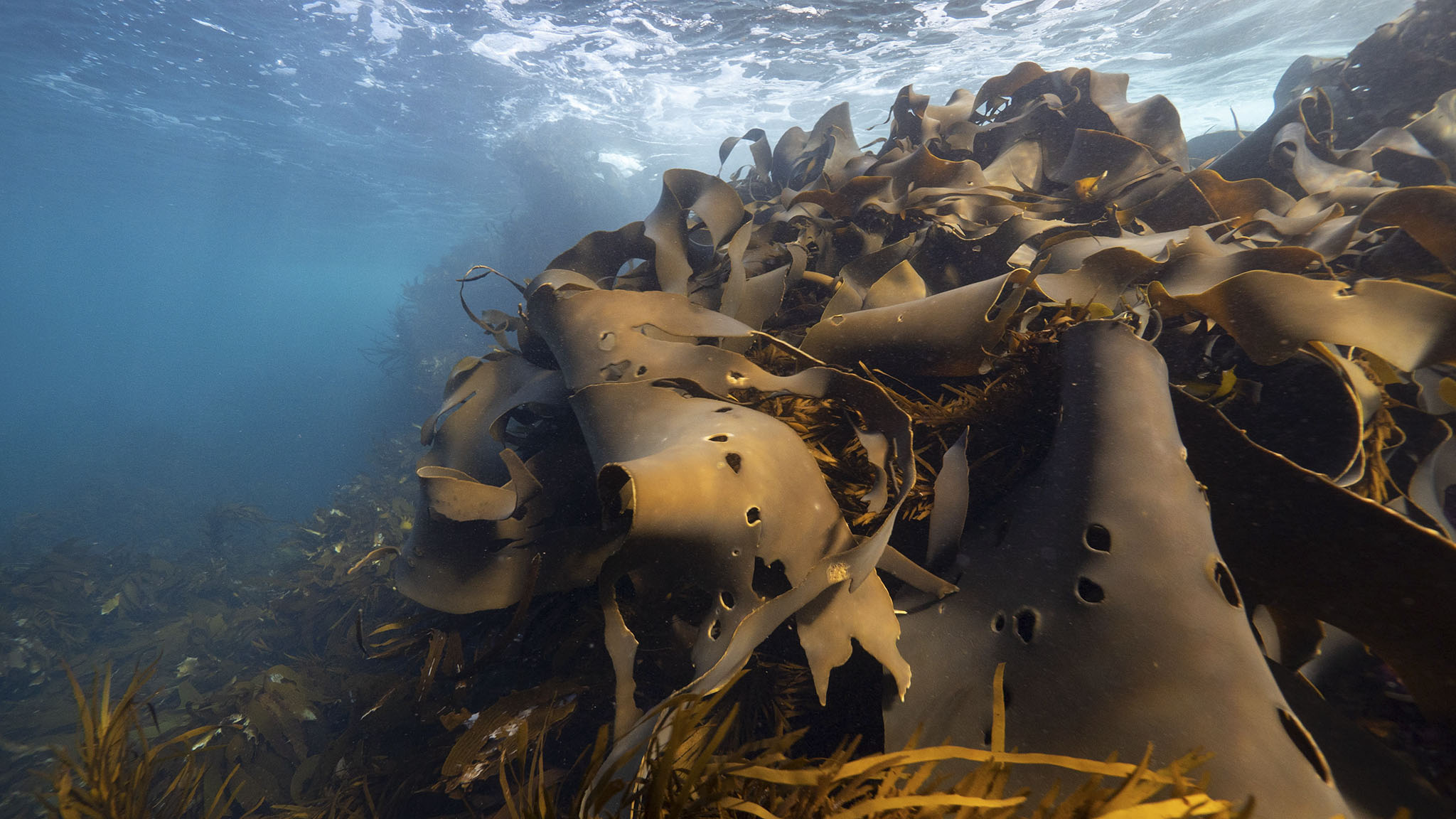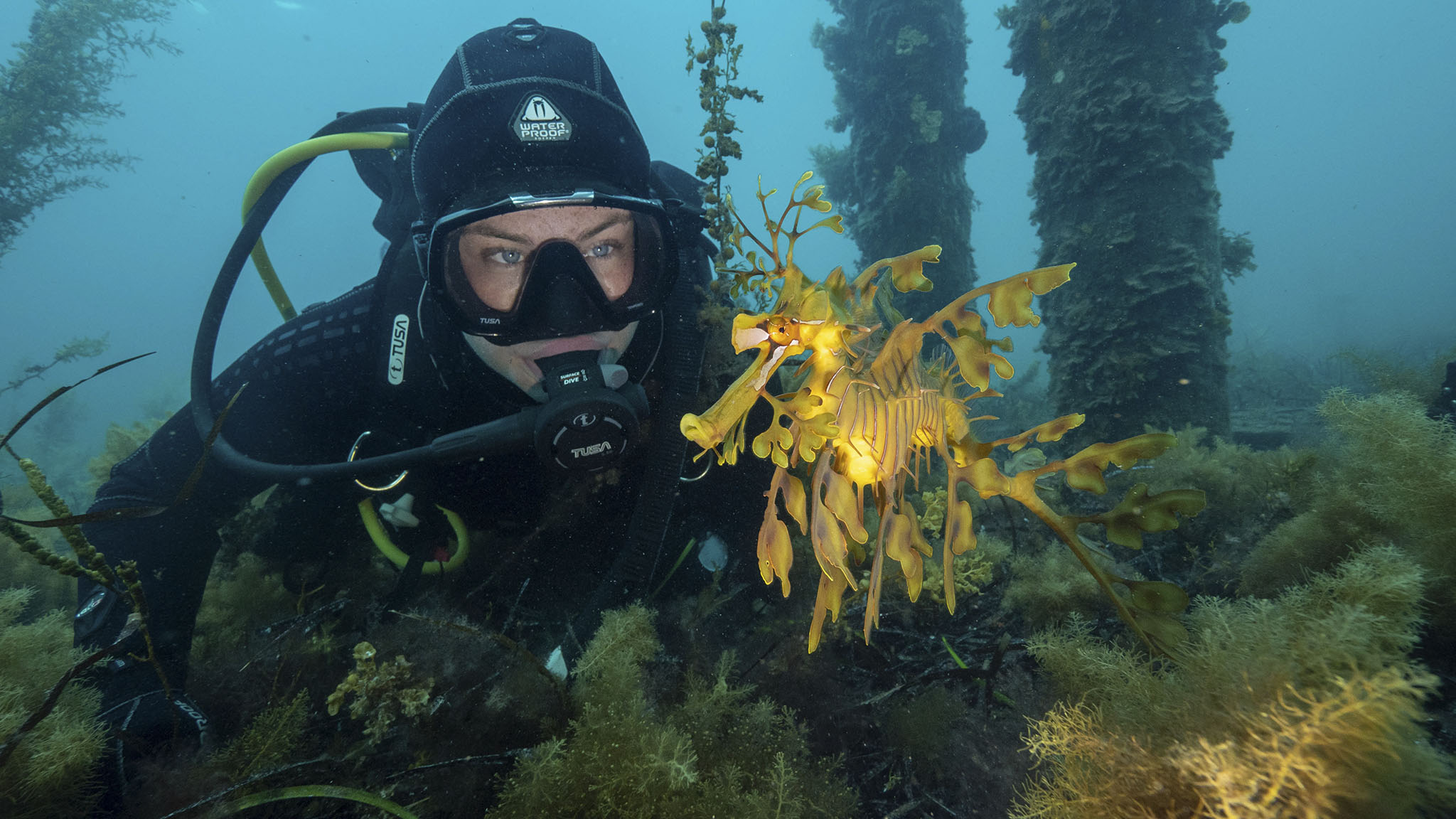Bunda Cliffs, Head of the Bight in South Australia. Photo: © Ocean Imaging
A dive off Australia’s wild southern coast reveals what is perhaps the continent’s best kept secret: the fascinating and intrinsically unique Great Southern Reef (GSR). Fueled by dense kelp forests that drive the productivity and life in the region, the GSR is one of the most pristine and unique reefs in the world.
The Great Southern Reef has been named Mission Blue’s newest Hope Spot in recognition of the reef’s exquisite, raw beauty, immensely rich biodiversity, indigenous values and the important work local stewards in the area have dedicated to research, education and public awareness.
Dr. Sylvia Earle, Founder of Mission Blue elaborates, “The Great Southern Reef is a fantastic example of how the natural world can thrive when we leave it alone. However, more must be done, because right now the Reef faces extreme threats from climate change and oil drilling. We need to embrace the identity of the GSR so all can understand and appreciate this ecosystem, so we can forge ahead and do everything possible to protect it.”
Fringing Australia from Kalbarri in Western Australia, down and around the rugged southern coast and up into northern New South Wales, the GSR is an interconnected network home to thousands of species; including the iconic giant cuttlefish, leafy seadragons, Australian sealions and giant kelp forests. ’“What makes the Great Southern Reef such a distinctive ecosystem is that not only is it incredibly biodiverse, but a high proportion of the species it hosts are found nowhere else on earth,” said Ocean Imaging director and science communicator Stefan Andrews who has been travelling the country developing films and educational materials about the Great Southern Reef.
Kelp Forest, Bull Kelp (Durvillaea potatorum), Eaglehawk Neck, Tasmania. Photo: © Ocean Imaging
Despite 70% of Australians living within 50km of the GSR, public knowledge of the Reef is scant. Hope spot champion and local West Australian PhD researcher Sahira Bell explains, “Temperate reefs are so understudied and under-acknowledged. This Hope Spot will be monumental in proving to the world that there’s a whole other side to marine environments that aren’t coral reefs; but are just as spectacular.” The southern coast is remote and exposed to the wild weather of the Southern Ocean, which in turn has allowed the Reef to flourish with minimal human interference. However, this phenomenon is a double-edged sword: little recognition of the importance of this ecosystem means rates of research investment and protection at a management level are also low.
The Great Southern Reef was first defined as an entity by a team led by Tasmanian researcher Dr Scott Bennett in 2016.
“This reef system is so immense yet towns are often hundreds of kilometers apart meaning local passion and pride is diffused across the continent. By giving these reefs an identity, our aim is to unite Australia’s coastal communities along this isolated and wild coast” .
The Great Southern Reef was first defined as an entity by a team led by Tasmanian researcher Dr Scott Bennett. “This reef system is so immense yet towns or cities that are hundreds of kilometers apart share the same productive kelp forests. By giving these reefs an identity, our aim is to recognise the connectivity of this unique and wild coast so that we can better protect it,” says Dr Bennett.
The interconnected nature of the Great Southern Reef is what’s so important for the public to understand. The reef’s entire ecosystem is connected by dominating kelp forests– so just as the Great Barrier Reef is made up of more than 3,000 individual reefs that are dominated by corals, the GSR is a temperate ecosystem made up of countless individual rocky reefs along 8,000 km of coastline..

Leafy Seadragon and diver, (Phycodurus eques), Yorke Peninsula, South Australia. Photo: © Ocean Imaging
Perhaps the Great Southern Reef’s most important act of stewardship is from the indigenous population. Indigenous Australians have lived off the sea’s abundant resources for tens of thousands of years. Tidal fish traps and productive coasts would act as camping grounds where knowledge was shared through storytelling, including the sustainable fishing and preparation of local fish, shellfish and crustaceans. Jasan Billny, a representative of the Barngarla people in South Australia explains, “Part of our connection to land and sea is that every flora and fauna has a story to it, so you treat it with respect.” He continues, “This connection to our country is why these resources have survived for so long.”
The biggest threat to the Reef is all-too familiar: the negative effects of a changing climate. The GSR covers two global warming hotspots where the rate of ocean warming has been in the top 10% globally over the past 5 decades. This warming has seen dramatic changes across all life on the GSR, and with impacts like this predicted to increase in the future, the continued health of the Reef is unknown.
The GSR also experiences threats from the human population directly, with the most recent coming from Norwegian energy company Equinor who plan to drill for oil in the broader Great Australian Bight region. Drilling for oil is not compatible with global commitments to reduce carbon emissions under the Paris Agreement, and the consequences of an oil spill are unimaginable; the entirety of the Reef that passes through the Bight and the life within it would suffer irreparable damage if disaster were to strike, and polls show that the majority of Australians share this view and are vehemently opposed to oil drilling.
Bell and her team are optimistic that the Hope Spot designation will motivate increased protection and research efforts for the Great Southern Reef, especially in young students who can establish the framework for the next generation of stewardship for the Reef.
“People protect what they love, and they love what they understand. We want to help everyone recognize the GSR’s importance, and to wholeheartedly understand what a special place we have here,” says Bell.

